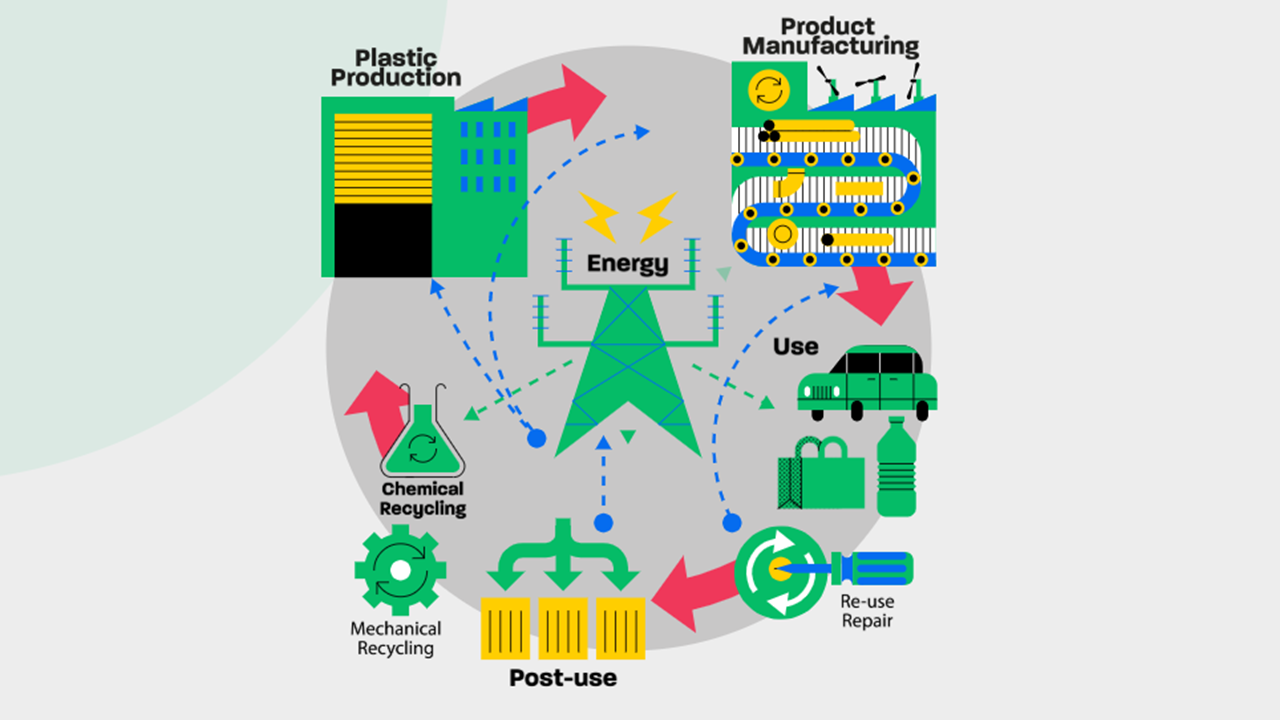
It’s everywhere. Plastic, whose usefulness and versatility have brought it into nearly every aspect of our daily lives, sometimes seems about to overwhelm us, with too much of it moving quickly into landfills and oceans. But while concerns about the spread of plastic waste have increased, so has movement toward solutions.
Plastic, one of the 20th century’s most successful revolutions, has shown unprecedented staying power. In the last four decades, the volume of plastic has quintupled, and is forecast to reach 400 million tons in 2020. About half of this space-age material is made to be used only once, and only about 14 percent is collected for recycling. As a result, an estimated 8 million tons of plastic waste enters the world’s oceans every year. Recognizing the threat to the environment and ecosystem, governments and businesses are taking action.
Recycling is only one of the strategies in the circular economy. Others include phasing out single-use items such as straws and plastic bags, a common theme across new policies not only in the E.U. and China, but among businesses such as Starbucks and Delta Airlines. Major brands like Unilever are also rethinking packaging design to use less plastic, or alternative materials.
But plastic isn’t about to go away, and incorporating it into a circular economy requires a wholesale transformation, from how it’s made to how it’s collected, sorted and reused.
New areas of activity related to the circular economy represent the new frontier of the environmental markets. Read more of this interesting article via: https://www.nytimes.com/paidpost/veolia/a-new-vision-for-plastic.html